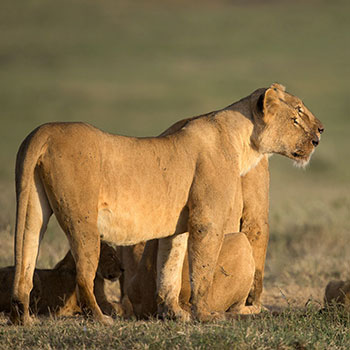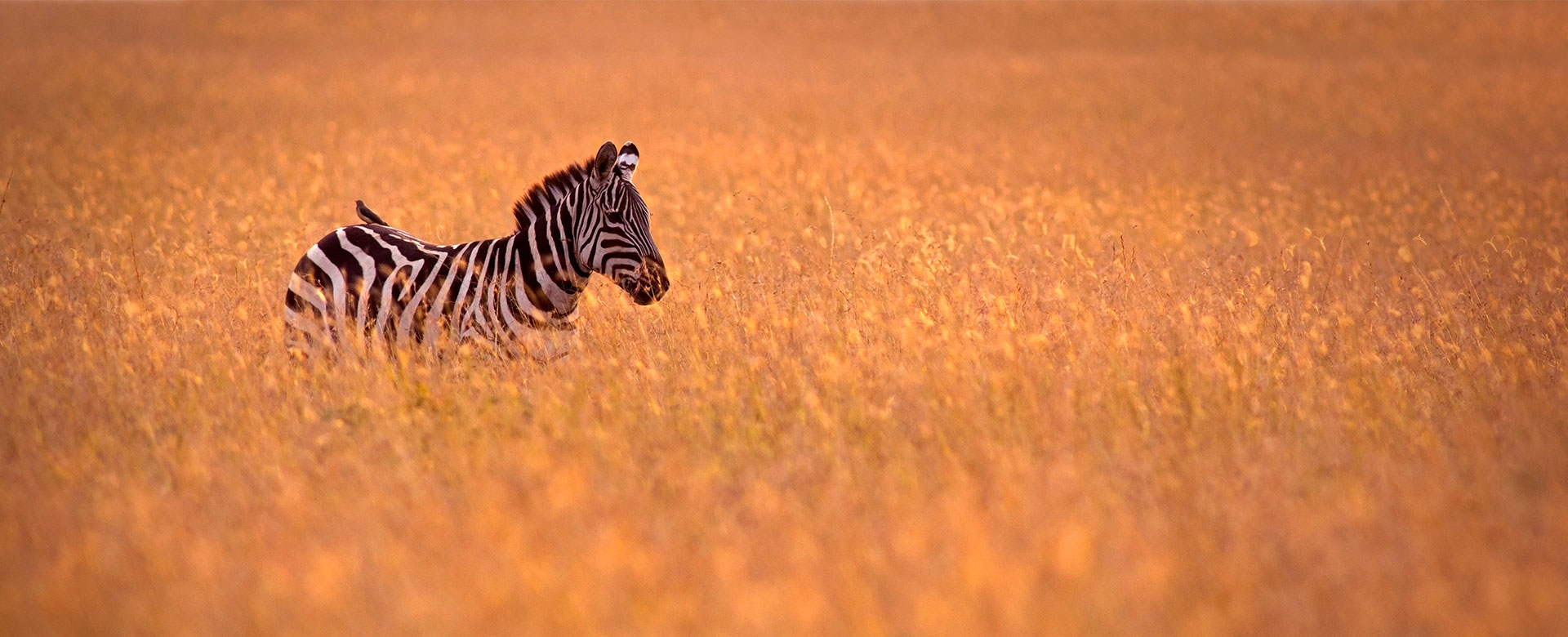
The Serengeti National Park is a vast undulating plain stretching 14,750 square kilometers (5,700 square miles). Its regions are the stage for the theatrical Great Wildebeest Migration. Here’s where to catch the migration throughout the year and the highlights of each season.
Southern Serengeti
Short grass plains, granite kopjes, lakes, small hills, valleys and depressions create the breathtaking landscape of the Southern Serengeti. This region is best known for the Great Migration from December through early April. It’s the season of calving so you can expect to see wobbly legged newborns alongside anxious mothers protecting their young from predators. With so many babies, the theater between prey and predator is especially dramatic. The southern Serengeti is also known for its vast number of cheetahs—you’re likely to spot many.
Central Serengeti
An expansive savanna with long grassy plains, riverine areas, granite kopjes and lakes cover the landscape of the Central Serengeti. The wildebeest, zebras and antelopes travel through this region in their annual migration north and south between the Southern and Northern Serengeti making this a prime area for wildlife viewing. As home to an abundance of lions, cheetahs and leopards, the broad Seronera Valley with its meandering rivers located within the Central Serengeti is often referred to as the big cat capital of Africa.
Western Serengeti
The Western Serengeti’s landscape stretches beneath an infinite sky. There are many rare and beautiful creatures here including black and white Colobus monkeys who live in the woodlands with the fast-running Patas monkeys. From late April through June during their annual migration north, many wildebeest and zebras brave the crocodile-infested Grumeti River in the Western Serengeti’s marshy corridor—and not all of them escape the jaws of the mighty crocs. There’s also a sizeable resident wildebeest population here year-round. The Grumeti River attracts an abundance of wildlife including buffalo and hippos who rarely stray far from the water.
Northern Serengeti
Visit the Northern Serengeti during the dry season from July to November and you’ll witness thundering herds of migratory wildebeest and zebra as they attempt to cross the Mara River as hungry crocodile lie in wait. You’ll likely see lions or zebras mating, elephants hanging out beneath trees, or a cheetah sprinting after its prey. Along the way you’ll definitely meet with exotic birds, hyenas, zebras, giraffes, cape buffalo, hippos, gazelles and impalas, too. With open woodlands, the swiftly flowing Mara River, hills and valleys, the Northern Serengeti offers a stunning landscape.

